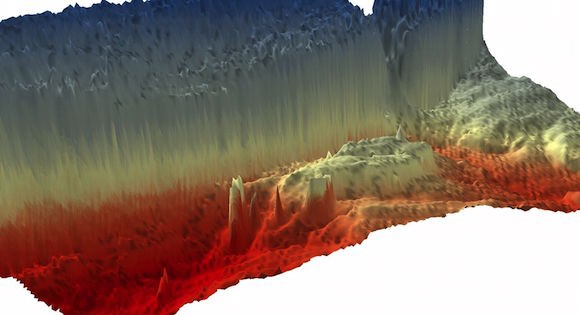Introducing the five new "Drowned Apostles"
Australia’s iconic tourist attraction, the Twelve Apostles, has received an unlikely boost in numbers with the discovery of five extra limestone columns hidden way below the water.
The never-before-seen sea stacks, located 6km offshore from the Great Ocean Road and 50m beneath the water’s surface, were revealed during sonar mapping of the seafloor off Victoria’s southern coast.

Scientists are dubbing them the “Drowned Apostles.”
While the Drowned Apostles are smaller in both size and number than their more famous cousins, their existence alone is remarkable given their defiance of normal erosion rates.
It is understood to be the first time such limestone stacks have been found preserved in the ocean.
The discovery was made by PhD student Rhiannon Bezore, Associate Professor David Kennedy from the Melbourne School of Geography and Deakin University’s Dr Daniel Ierodiaconou, who provided the high-resolution sonar data.
“Sea stacks are always eroding, as we saw with the one that collapsed in 2005, so it is hugely surprising that any could be preserved at that depth of water,” Associate Professor Kennedy said.
“They should have collapsed and eroded as the sea level rose.”

Like the Twelve Apostles, the newest additions would have once been part of larger limestone sea cliff.
Ms Bezore, who made the initial discovery in the sonar data, said they probably date back 60,000 years.
“We had to check what we were seeing because no one has seen stacks submerged at this sea level before,” she said.
Only a very fine balance can create sea stacks, with rock needing to be soft enough to erode quickly from a cliff but hard enough to support a rocky pillar, Dr Ierodiaconou said.
Dr Ierodiaconou’s sonar data was collected using the latest advances in multi-beam sonar technology and the team are continuing to fill important knowledge gaps aboard Deakin’s $650,000 research vessel, Yolla.
The data is part of a project to map the reef estate in Victoria which supports commercial fisheries for southern rock lobster and abalone.
“We are only just starting to understand the biodiversity value of these deep reefs which harbour diverse invertebrate communities, many unknown to science,” he said.
Ms Bezore presented the paper at the International Coastal Symposium in Coogee, Sydney on March 10.
The findings have been published in the US-based Journal of Coastal Research.
A visit to the site by Victorian technical divers has provided photos of the beauty of these deep reef communities.
Melbourne School of Geography
The Melbourne School of Geography is embarking on an exciting period of growth. This follows its move into the Science Faculty at the start of 2015, and the recognition there of the importance of Geography’s capacity to work in and across both the social and natural sciences.
At Melbourne you can undertake a Geography major as part of a Bachelor of Science, Bachelor of Arts or a Bachelor of Environments. These lead on to various Masters and PhD programs and a diversity of career opportunities.
*

































Ask A Question
Ask us about your program of interest, or if you have a question about our services.
CONTACT US TODAY